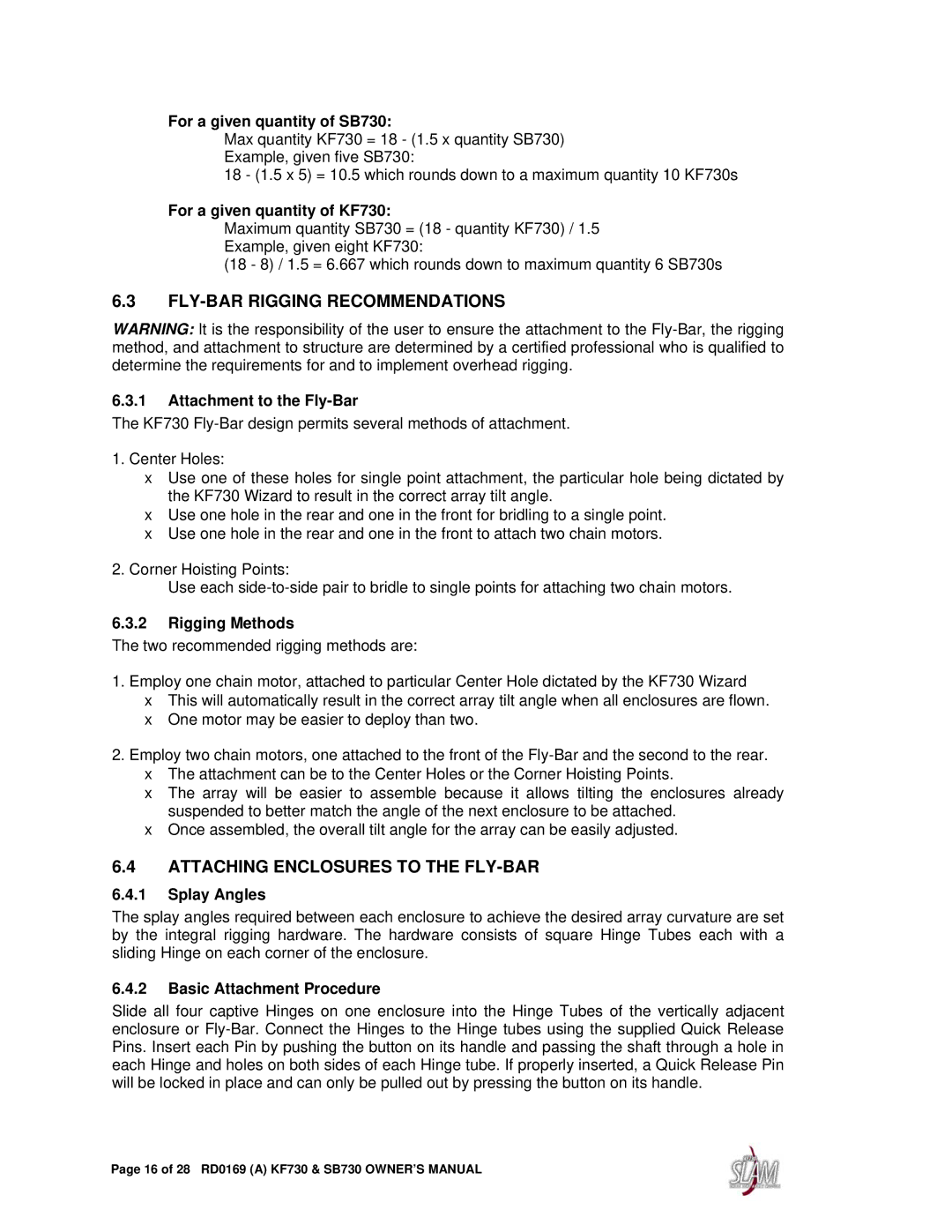
For a given quantity of SB730:
Max quantity KF730 = 18 - (1.5 x quantity SB730) Example, given five SB730:
18 - (1.5 x 5) = 10.5 which rounds down to a maximum quantity 10 KF730s
For a given quantity of KF730:
Maximum quantity SB730 = (18 - quantity KF730) / 1.5 Example, given eight KF730:
(18 - 8) / 1.5 = 6.667 which rounds down to maximum quantity 6 SB730s
6.3FLY-BAR RIGGING RECOMMENDATIONS
WARNING: It is the responsibility of the user to ensure the attachment to the
6.3.1Attachment to the Fly-Bar
The KF730
1.Center Holes:
•Use one of these holes for single point attachment, the particular hole being dictated by the KF730 Wizard to result in the correct array tilt angle.
•Use one hole in the rear and one in the front for bridling to a single point.
•Use one hole in the rear and one in the front to attach two chain motors.
2.Corner Hoisting Points:
Use each
6.3.2Rigging Methods
The two recommended rigging methods are:
1.Employ one chain motor, attached to particular Center Hole dictated by the KF730 Wizard
•This will automatically result in the correct array tilt angle when all enclosures are flown.
•One motor may be easier to deploy than two.
2.Employ two chain motors, one attached to the front of the
•The attachment can be to the Center Holes or the Corner Hoisting Points.
•The array will be easier to assemble because it allows tilting the enclosures already suspended to better match the angle of the next enclosure to be attached.
•Once assembled, the overall tilt angle for the array can be easily adjusted.
6.4ATTACHING ENCLOSURES TO THE FLY-BAR
6.4.1Splay Angles
The splay angles required between each enclosure to achieve the desired array curvature are set by the integral rigging hardware. The hardware consists of square Hinge Tubes each with a sliding Hinge on each corner of the enclosure.
6.4.2Basic Attachment Procedure
Slide all four captive Hinges on one enclosure into the Hinge Tubes of the vertically adjacent enclosure or
Page 16 of 28 RD0169 (A) KF730 & SB730 OWNER’S MANUAL
